Travel
SOS Bison
Did you know that the word bison describes bison living in North America and buffalos those roaming in Asia and Africa?
As of 2008, the American bison is listed as a Near Threatened Specie on the red list of the International Union for Conservation of Nature (IUCN).
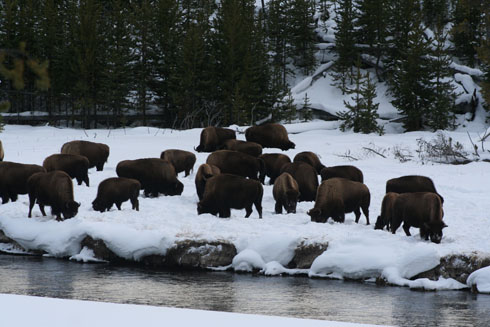
Bison herd in Yellowstone
Although, 2,5 million bison lived on American prairies by 1750, in 2008 not even half a million were counted: 400,000 lived in commercial herds and about 31500 in conservation herds. In Yellowstone Park one estimates today the number of bison between 3000 to 5000.
But it was much worse at the end of the 19th century. In 1889 one counted 1091 bison in North America. The Yellowstone Park started in 1902 a bison restoration program and in 1966 the National Bison Society was created.
Where to see and learn about buffalos in Montana:
- Yellowstone Park:
The park is a great place to see bison moving freely. While you can drive you car through the park in the summer, in the winter, you will take a snowcoach. Your guide will stop you when he sees bison or other wildlife.
Something to remember, says our guide, bison are fast and you should run quickly if a bison comes too close to you. When his tail is up you can never know if he is in love, wants to go to the bathroom or wants to attack you.
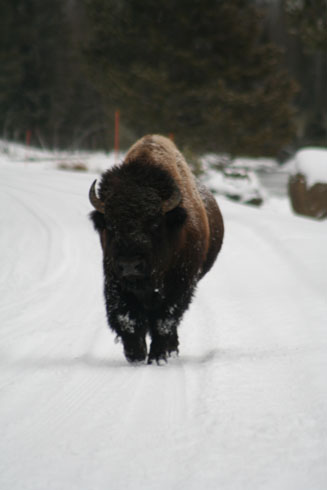
Bison running in Yellowstone
The bison live in community and are spotted in different places depending if it is summer or winter. In the summer they are more seen around the Hayden valley and in the winter around Old Faithful. Some days you may spot many, while other days you may be lucky if you even see one.
- First Peoples Buffalo Jump State Park, near Ulm-Vaughn Road:
The state park and visitor center is a must if you are interested in American history and its symbol, the bison. Wander on the 1 mile long hill and see where the bison were brought before being led off the cliff. There are numerous hikes you can do in the summer. The views are breathtaking but you should be careful for rattle snakes and look where you step!
The Buffalo Jump in Ulm is one of the largest buffalo jumps of maybe 300 in North America.
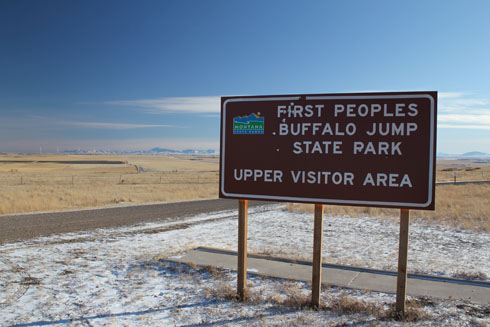
First Buffalo Jump Park sign near Ulm, Montana
It was used by the Indian tribes. During the time of the Buffalo Jump, tribes helped each other. One knows that fourteen tribes stayed together to remove the skin, organs and get the meat.
We have no idea how many bison died there, some say it could be 6000.
The Indians killed an entire herd each time. One herd was maybe 75 to 100 bison. Why did they kill an entire herd? Richard, the park ranger at the center explains that if one bison survived he would tell other bison and other herds would never go up again.
Once a herd was found, the Indians had to stay with it until all bison died, no matter if it was night, daytime, a sunny or a cold day.
Who were the people responsible? Indian boys were important to the success. The key player was a 13 years old boy. He would bring bison to the buffalo hill and lead them to their death over the cliff. It was a very dangerous task especially as soon as the buffalos started running and arrive at the end of the cliff. The boy had to hide in order not to be hit by the powerful animals. The boy chosen to do it wore a hat with bison horns; the bison would see it and run toward it.
On the other direction there was a eight years old boy, who had to scare the bison away. He wore a wolf coat. And there was a six years old who stayed there to make noise.
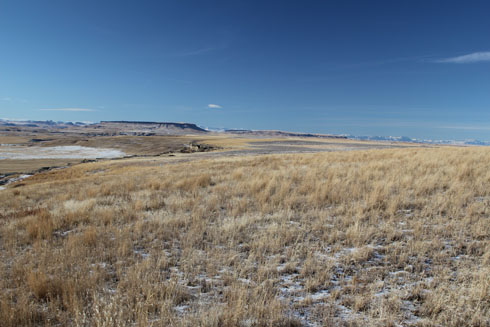
First Buffalo Jump Park Cliff
Although the visitor center opened 40 years ago, it is only in 1991 that the first dig happened. It was led by the University of Bozeman and lasted three months. The dig was not so deep and at this moment no one is ready for another one.
It is also difficult to know for sure from when it was used but research shows from 5oo C.E to 1700 C.E.
- Lewis & Clark Interpretive Center, Great Falls:
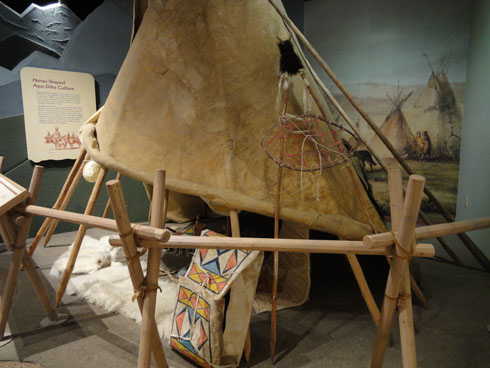
Tepee at Lewis and Clark Interpretive Center in Great Falls
Spend a good hour in the exhibit halls and listen to the daily interesting talks. You can see and learn what the Indians did with the dead bison.
- Charlie Marion Russell Museum, Great Falls:
There is a fascinating exhibit at the Charles Russell museum about the bison, the American Icon. It has been there since 2008 and can be viewed for another 4-5 years.
The museum invested a large amount of money in this exhibit, about 1,5 Million dollars. You can admire 500 artifacts from many museums in the U.S. and Canada like the one in Edmonton and Browning.
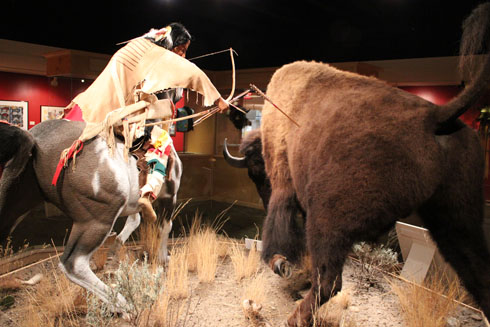
Indian killing a bison at the Bison Exhibit in Great Falls C.M. Russell Museum
It is very informative and helps you understand what happened to the millions of bisons which once lived on the Northern Plains. What happened to the bison to go from millions to being almost extinct? You learn about the Indians who hunted the bisons and watched famous paintings, see tepees with buffalo hides, bison coats, a robe and skulls. You can even hear the noise of a running herd! It will shake the ground and you would not want to be on the way when a herd comes your way! So don’t miss this amazing exhibit.
Hope this made you want to know more about the North American bison.

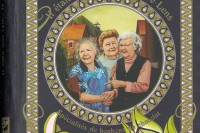
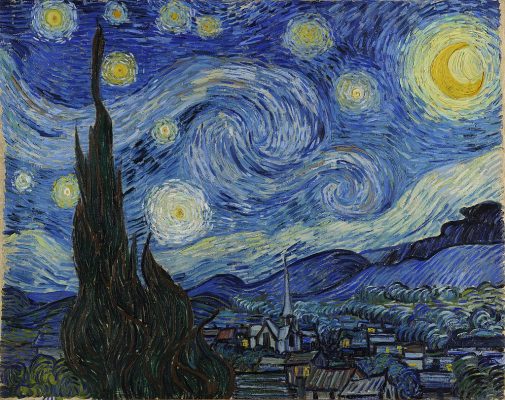
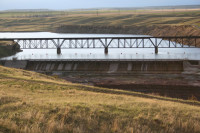
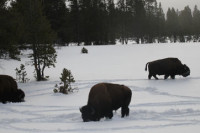

Saved as a favorite, I love your site!